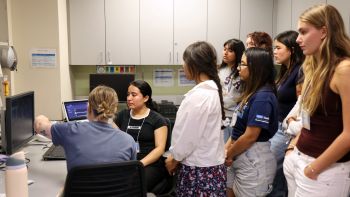Dropping case rates and the rollout of vaccines mean that for many areas of the country, spring is bringing schools, sports fields, and other in-person activities back for the first time in more than a year.
On the surface, reconnection with teachers and friends appears to be purely good news. But like everything in this pandemic, it’s not that simple.
The truth is, the shutdown was not a clear-cut case of good or bad for many adolescents. For most young people, time online and with family increased, and time in school and with peers decreased. Whether those changes were positive or negative depended on a youth’s individual experience in any of those environments.
“If you were bullied at school and school was a pretty stressful environment, then maybe not being at school is not such a bad thing,” said Dr. Nick Allen, a clinical psychologist and professor at the University of Oregon. “However, for many other kids, that’ll be a loss. And that’s just one example. You could make the same argument for families or online environments.”
Likewise, the return to in-person activities is likely to evoke a range of feelings among young people.
“Reentry is going to bring new challenges,” said Dr. Candice Odgers, professor of psychological science at UC Irvine. “If you take a developmental lens, kids were taken out 18 months ago, and for many, we are now throwing them back into completely new environments. There’s been this gap, and depending on where they are, some kids who walked out last March in elementary school will now find suddenly find themselves navigating middle school.”
So how can the adults who will be greeting adolescents as they return to classrooms and activities support young people during this reentry process?
- Expect and normalize a range of emotions about reentry. Returning to school may be tough for a student who had been bullied. Even kids who enjoyed school before the pandemic may struggle with social anxiety after a year of exposure to others and social-skill building that normally happens in a classroom.
- It took months to adjust to distance learning, so prepare for a similar transition in the return to classrooms. For example, for middle and high school students who have adapted to a more solitary, autonomous way of working, the increased structure of in-person school will take some getting used to.
- Recognize that many students are not returning where and how they left off. A lot of development has occurred since before the pandemic. Students are returning to new classrooms or even new schools, many looking quite different (taller and more mature, for example) than they did last March.
- Provide emotional support. We don’t know what’s been happening with many of these young people, but we can expect that most have experienced some kind of loss in the past 12 months, from missed birthdays to a parent’s lost job to the death of a loved one.
- Look for signs that the transition back to “normal life” is happening too fast for a young person. Instead of just helping them to “catch up,” focus on supporting the transition back to the places, people, and experiences they’ve missed this last year. This may be an opportunity to re-evaluate how packed their schedule really needs to be.
Finally, keep in mind that in the face of enormous challenges, many young people have found ways to connect, create, and contribute in ways that made a real difference to their families, friends, and communities. As we move forward, we can recognize the resilience this generation has shown in the face of an unprecedented worldwide crisis, and treat them as partners as we figure out how to rebuild together.



